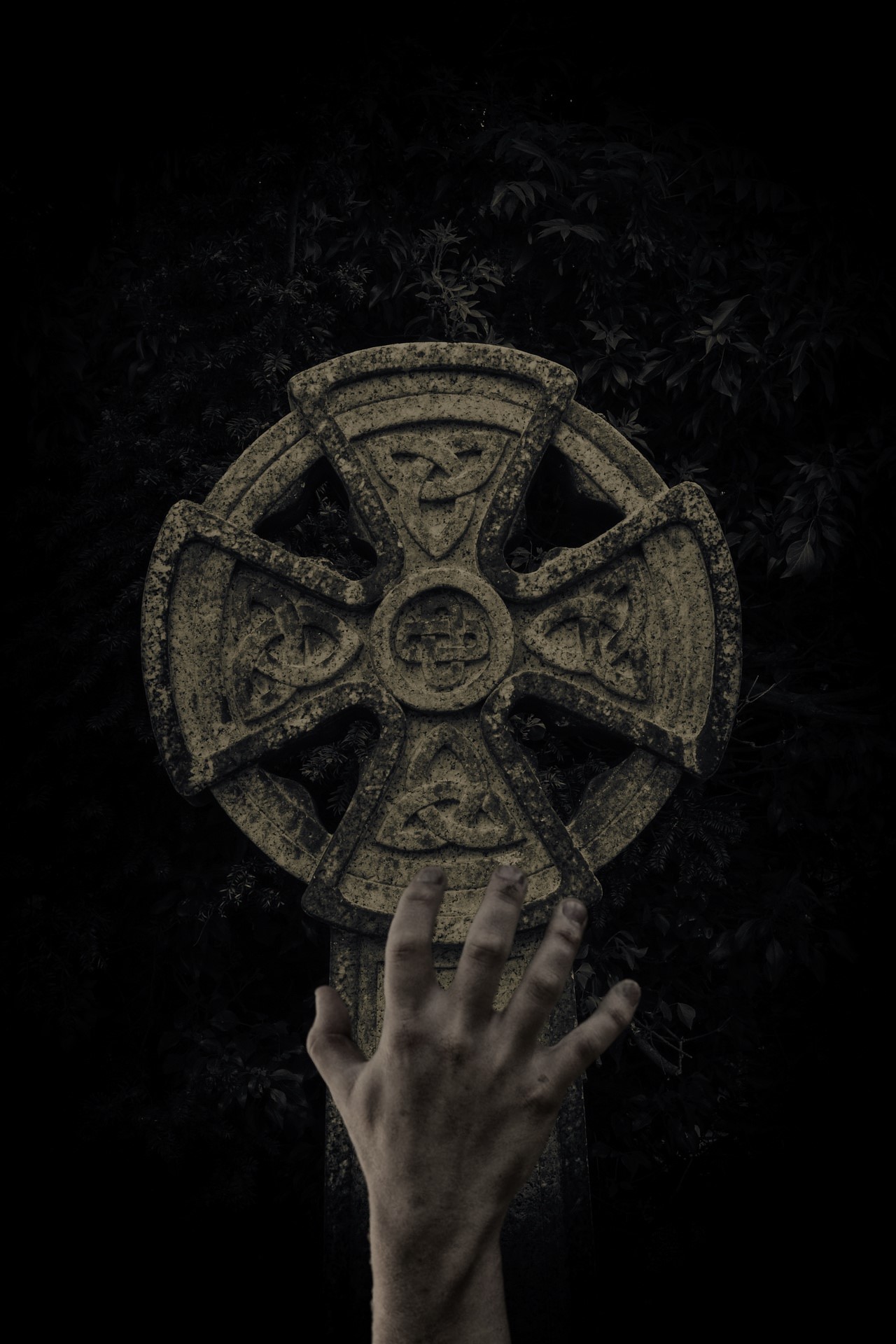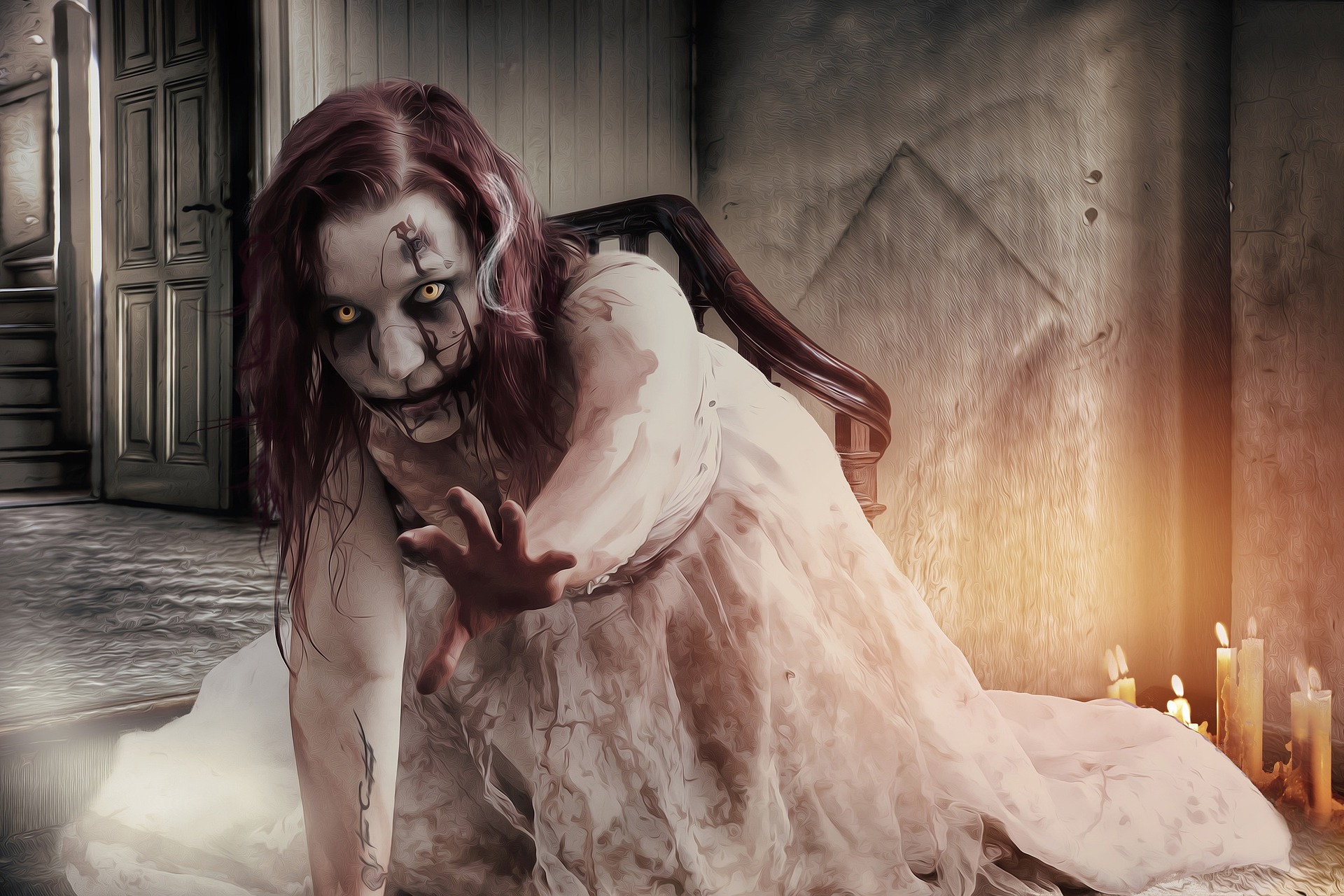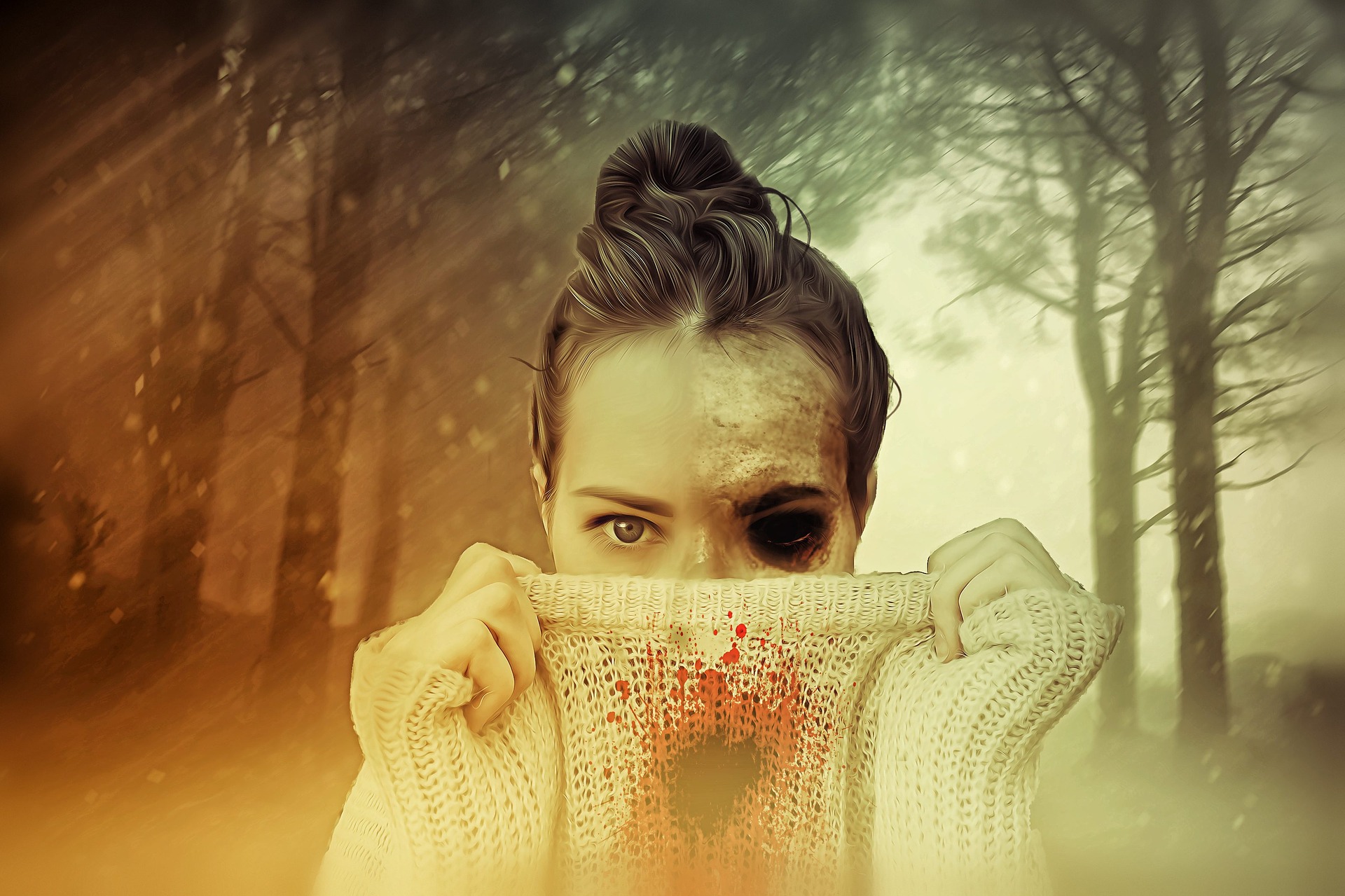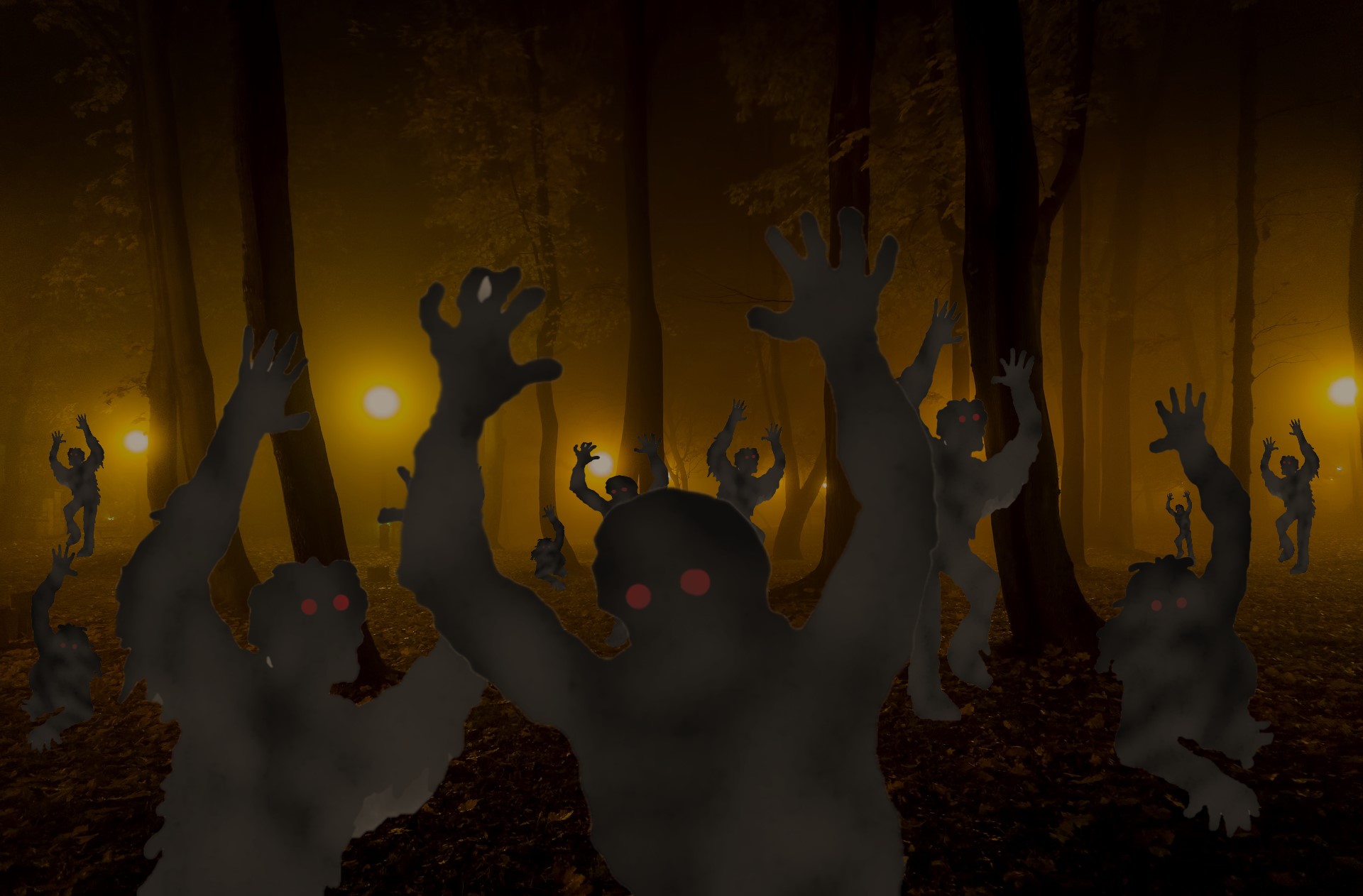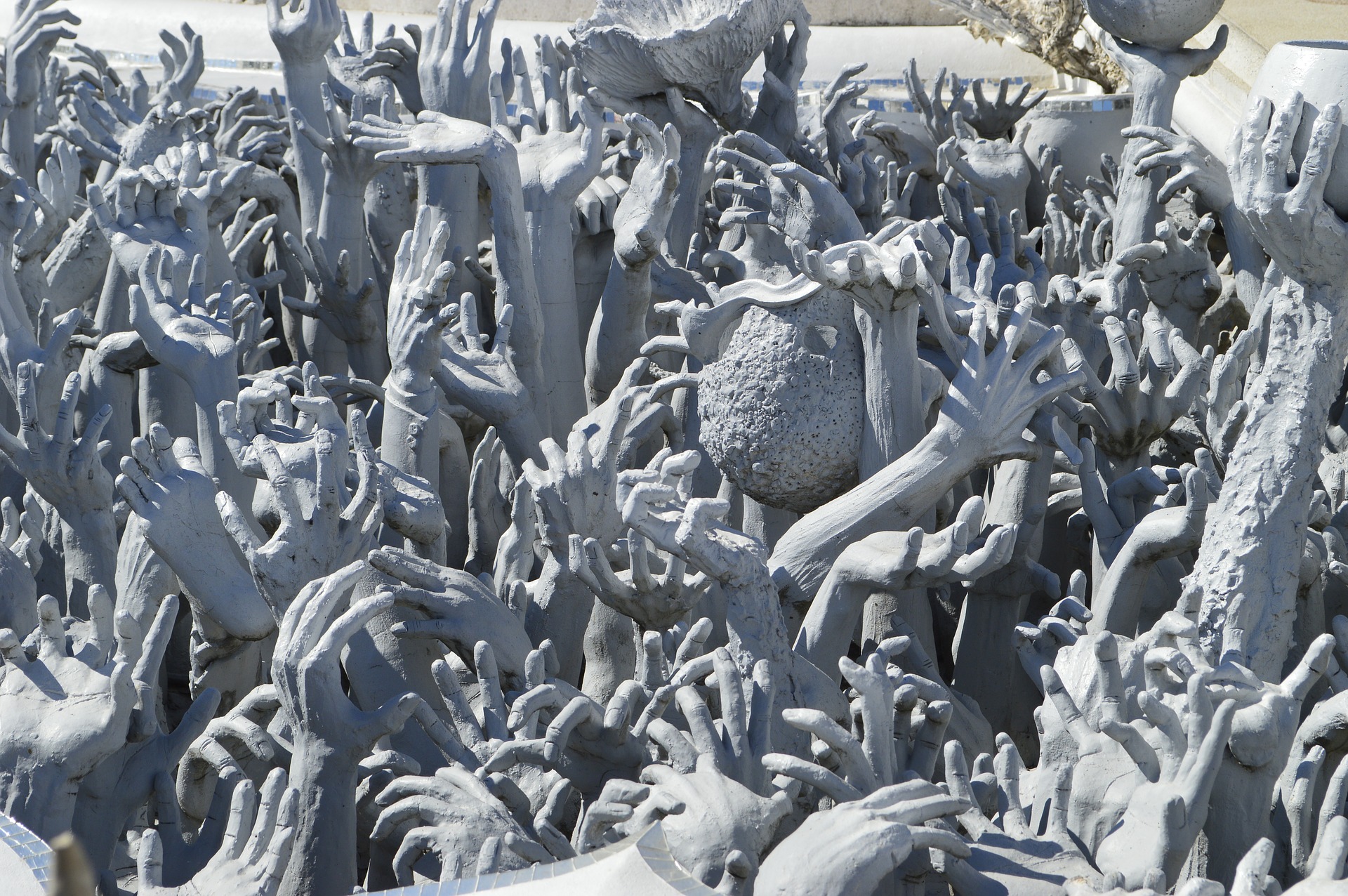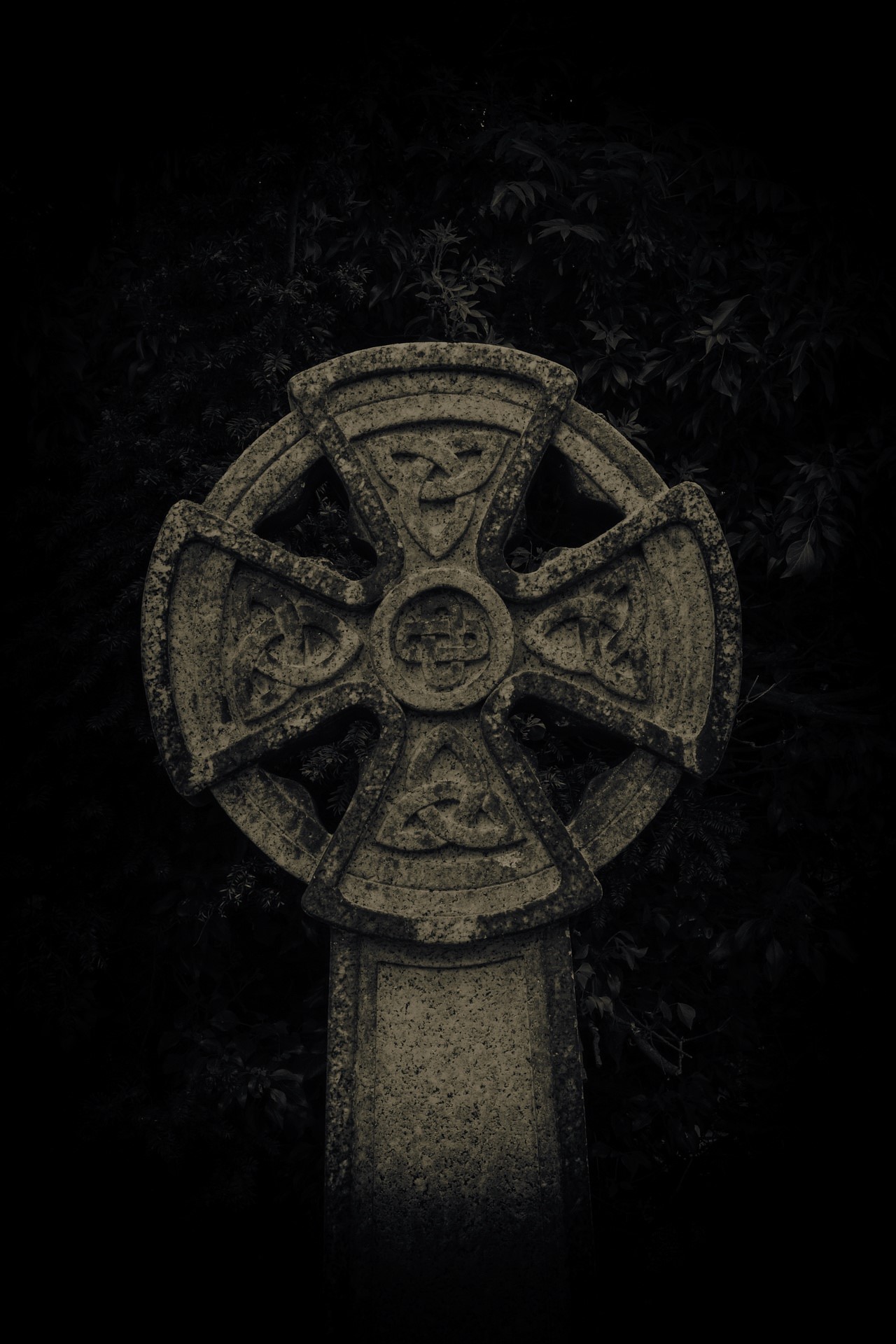

You’re staggering down a desolate street in the early hours of the morning. The sun hasn’t come up yet and your vision is slurred with the numb comfort of alcohol. As you make your way home, you lean up against a nearby lamp post for stability. As you do so, off in the distance you see someone else stumbling towards you from the graveyard. You laugh as they stumble towards you, knowing that you are very well doing the same exact thing.
“Hey buddy, go home you’re drunk” you call out, your voice sounding thin and bubbly.
No response.
“Hey, buddy! I’m…talking to you.” You call out, swaying where you stand.
The figure is getting close now.
Some ten feet away, slowly but surely closing.
“Oh, you wanna fight, buddy?” You laugh putting up your fists.
Light from the nearby lamp post spills onto the figure, and you see a dark splash of blood on the man’s jacket.
Your cocksure attitude dies.
“Hey buddy, you hurt? I’ll call a…call an ambulance.” You say, fumbling for your phone.
The figure stoops in front of you and you look up, realizing too late that the hospital is going to be little help to this guy.
For the man's face is completly ripped off and hanging to one side of his face, exposing bloody raw muscles and his jagged, sharp teeth.
Your phone clatters from your hand.
You turn to run.
The man's hand clamps down on your shoulders, trapping you from behind.
You struggle to get away, punching and scratching at his vise-like grip.
However, it's much too late.
You feel the man's teeth clamp down on the back of your skull...and begin to make their way to your brain.
From the critically-acclaimed Night of the Living Dead film from 1968 to The Walking Dead television series of today, Zombies have certainly submerged themselves in the different retellings of the creature. For this discussion, the model we will use for our discussion of the zombie will be the zombie that appears in Night of the Living Dead as it is arguably one of the first films to truly cement the image of the zombie into public culture. Surprisingly, there aren't many different versions of Zombies that deviate beyond a singular model: the model that was defined in the movie Night of the Living Dead . This model will be used to best frame the basic zombie for the purposes of this discussion since it is arguably one of the biggest movies to popularize the concept of a zombie. Keep in mind that not all the zombies discussed here will follow a strict adherance to the following definition but they will only vary slightly from this offered model.
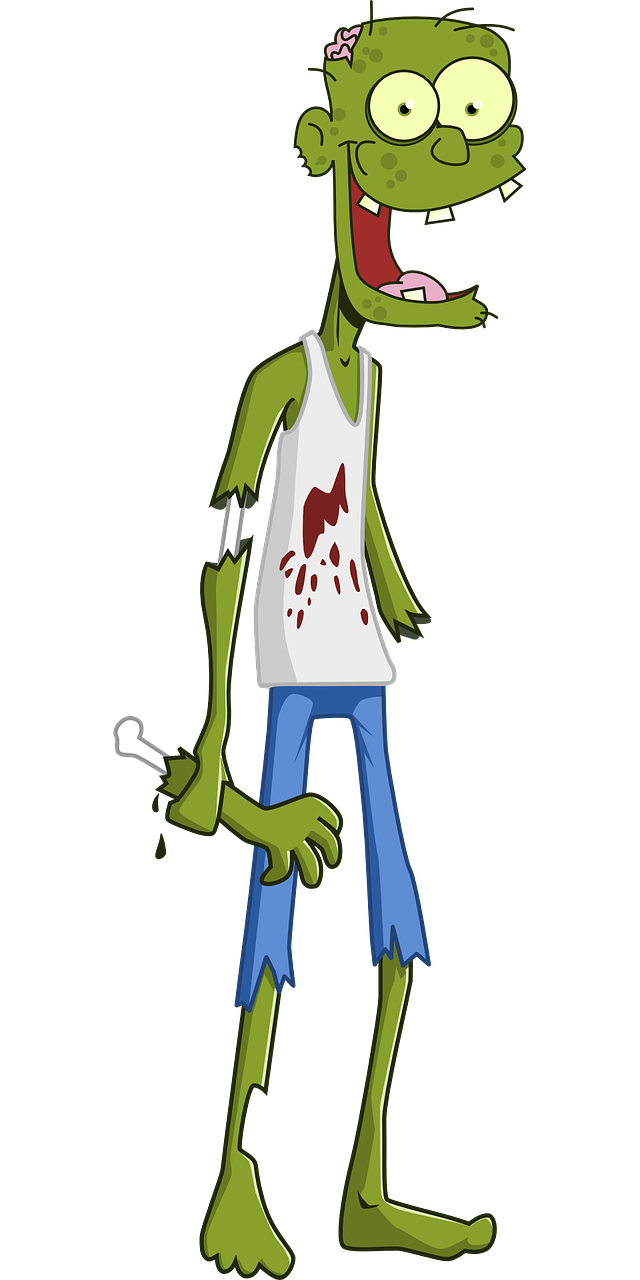
The zombie in Night of the Living Dead is a relatively simple concept; a corpse that rises from the dead to consume the flesh of the living. In the Night of the Living Dead film and subsequent Romero films, the cause of this reanimation is unknown but it is established that any human who dies after the "Zombie Apocalypse" begins will then become zombies themselves within minutes of dying. In examining this monster, zombies are seemingly incapable of sentient thought or reason. Instead it is driven by a singular instinct to feed on as many people as it can, though it does not do so for sustenance, feeding endlessly for unknown reasons. To aid in this mindless quest, zombies have enormous physical strength, feel no pain or fatigue and can continue to operate despite massive amounts of damage to its body. Extreme blood loss, losing some or all of its limbs, or other excessive physical trauma does not stop it (though in the cases of lost limbs may slow it down a little). This apparent invulnerablity comes with a single caveat: if its brain is destroyed, so is the monster. In addition, their bite is especially deadly, causing victims to sicken and die within three days of becoming bitten. Due mainly to both its slow speed and nonexistant intelligence, most zombies are only effective in large groups. These "hordes" will endlessly seek out humans to feast upon, invariably causing humans to draw away from them until they reach a point where the horde can surround them or box them in enough so the humans can not escape. When that happens, it's only a matter of time until the horde breaks through the humans defenses and add their numbers to their ranks (See clip below for the Explanation from the Movie).
However, one of the strangest aspects of this monster is its popularity in our culture. The zombie doesn't have a large host of powers and abilities, can be killed through relatively simple means, and and can be seen coming a long while away. So why does its popularity equal that of the Vampire or the werewolf? Especially when many could argue that these other monsters have so much more to them to fear than the zombie? Could it be that deep down there is still something compelling about the Zombie? Something terrifying even? A fear we see reflected back at us in its utterly brainless gaze?
